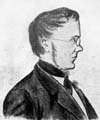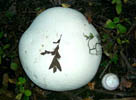(pl. Documenting your collections)
Terms discussed: collection (pl. collections), dry
Topics:
Documenting your collections
description or photograph.
location
A collection
Drying your collections
Documenting your collection
For a mycologist to make productive scientific use of material you have collected, that material must be documented. This is very simple and easy, and makes things simple for the mycologist. The ideal documentation is a photograph, a location, and dried specimens. The dried specimens allow the mycologist to examine them to search for microscopic features, and the photograph lets the mycologist know what the mushrooms looked like when they were fresh.
Back to top
description or photograph.
If you can't take a photograph, a written description is fine. Write down mostly colors and features that will change in drying or with handling: toughness of various parts of the fruiting body, any powdery or flaky stuff that will eventually get lost, stuff like that. If these features won't be visible in your photograph, you may want to write them down anyway.
One friend didn't want to give me some collections that he had dried, because they had shrivelled and faded so much, and he felt he had ruined them somehow.
That's okay; that's normal. The dried mushroom is mostly to look at under the microscope, not as a whole. But that's also why the description is important.
Back to top
location
The location that you found the mushroom at is also essential. If possible, give host information: what sort of tree or wood the mushroom was growing on; or if it was growing on the ground, any trees that were nearby.
Back to top
A collection
A group of mushrooms of the same species, gathered in the same place at the same time, is called a collection. Since a collection hopefully represents the fruiting bodies of a single mycelium, it is important to keep each collection separate from your other collections. This lets the mycologist build up a concept of what you have found one individual at a time.
Back to top
Drying your collections
The best way of preserving your collections for scientific purposes is by drying them. This can be done in a vegetable drier, which is fairly easy, if you have a vegetable drier. If you don't, you can dry mushrooms by placing them on a paper plate or piece of aluminum foil and parking them over an ordinary lamp. You can punch some holes in the plate or aluminum foil, if you want, for better air circulation. If the mushrooms are very thick-fleshed, you can cut them in half (top to bottom). They should dry overnight, and end up about the same density and flexibility as potato chips. If you have a stove with pilot lights right under its top surface, you can dry things by placing the plates over the pilot lights; that's how I dry most of my specimens. In one really hot, humid summer, I dried some specimens by aiming a space heater (the kind with a fan) at them. That worked quite well, although I'm sure it blew every single spore off the gills; I'm also sure that they would have spoiled in the humidity otherwise.
Big polypores probably don't need to be dried.
Back to top











